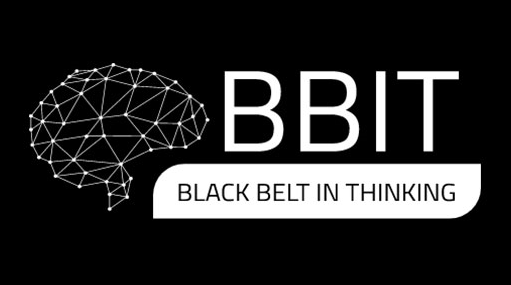Increasing your critical thinking skill is the most effective way for many of us to increase our performance in almost every other area of your life. Ultimately we think through (or don’t!) our actions for everything we do. Thinking more clearly – or developing the skill to stop and think more often will improve the actions we choose, the things we say and the decisions we make.
The smartest person in the room, the person with the quickest retort, or the person others go to when they just can’t solve something is simply the best thinker.
So what is it that makes people so great at critical thinking?
They are able to both see the situation clearly and logically and are able to challenge the assumptions underlying the logic to find flaws. Identifying these flaws is useful to unravel the logic of a problem we want to solve, or to strengthen the logic of a solution we want to implement. Further in the series we will distinguish between problem solving (removing current negatives) and decision making (choosing or implementing for a future positive).
How can I get more of that skill?
Train the two skills. One is seeing the logic clearly. The other is understanding (and challenging) the assumptions made in the logic.
Seeing logic clearly
In this article we will look at simple one step logical statements, we’ll look at more detailed logical steps in the Problem solving and Decision making articles.
The type of logic we’ll focus on here is formally called Sufficiency but we’ll call it Cause & Effect.
Cause & Effect is when you are looking at how and outcome comes to be, or is claimed to. We could say, ‘If I push the brake pedal, then the car will stop’. We could also break that down and include all the links in that chain between our pedal, the master brake cylinder, the brake lines, callipers, brake pads, and tyres. It depends on our situation what is relevant, and mechanic will quickly identify the area (say brake line), then investigate the cause and effect break down of what is causing the problem in the brake line. We might just be more interested in that the brakes work.
Another few examples are:
‘If a manger yells at someone, then the person quits’
‘If I get to work after 9:30, then I have a good day’
‘If I prepare for a meeting, then the meeting often has a better outcome’
‘If I delegate the task, then I won’t get the right outcome’
An easier way to look at logic is as a diagram:
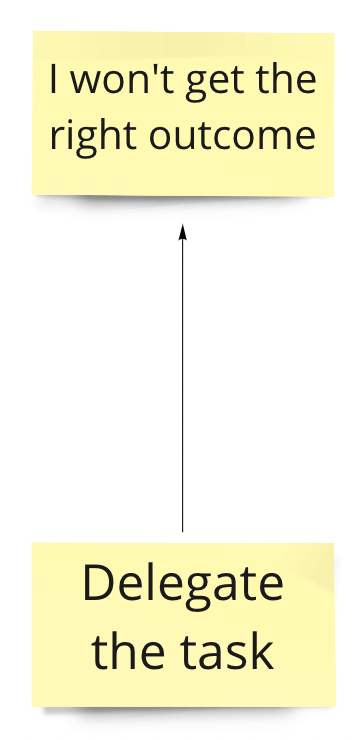
You can use this to string together cause and effect chains, as well as looking at branching logic. For the most part having the boxes or stick notes containing single statements with arrows helps us to focus on the key parts of the logic without all the story around it.
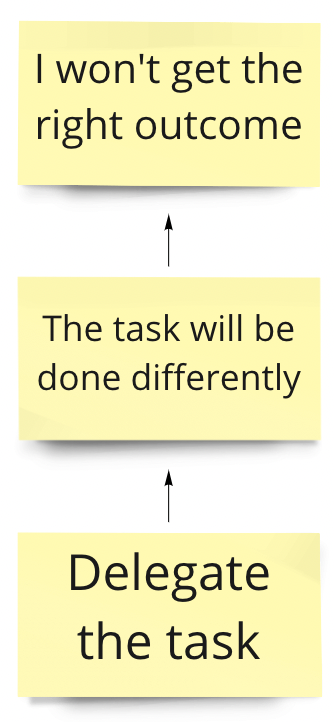
Practicing drawing out cause and effect logic like this helps to train your brain to see situations like this, simple logical statements. The more you can do this in your head the easier you will find it to ‘hear’ the logic in what others say. Sometimes just this is enough for their claim to not add up, without having to go to the next step of understanding and challenging the logic.
Challenging Logical Assumptions
This is the ‘critical’ part of critical thinking. You want to consider all the things that must be true for the logic of one of the cause and effect statements to make sense. What you might find is that some of the things that would ‘have’ to be true, aren’t. That tells you there is a flaw in the logic. We call these things Assumptions, this is both a technical term in logic and a really useful prompt for challenging logic.
In the technical sense these are not ‘oh you’re just making an assumption’, they are things that we have taken as true (or assumed to be true).
In the useful prompt sense they are, ‘hrm you could just be making an assumption’, they are the things we want to be critical of and consider how likely they are or if they exist in fact at all!
Being a better critical thinker is being better at understanding and challenging logical assumptions.
To challenge the assumptions we first need to understand the assumptions that we or others are making in a logical statement. The easiest way to practice this is to use the diagrams we just looked at.
Part 1:
- 1. Write out the cause and effect statement (yellow)
- 2. Consider what assumptions are being made that require the logic to hold (blue)
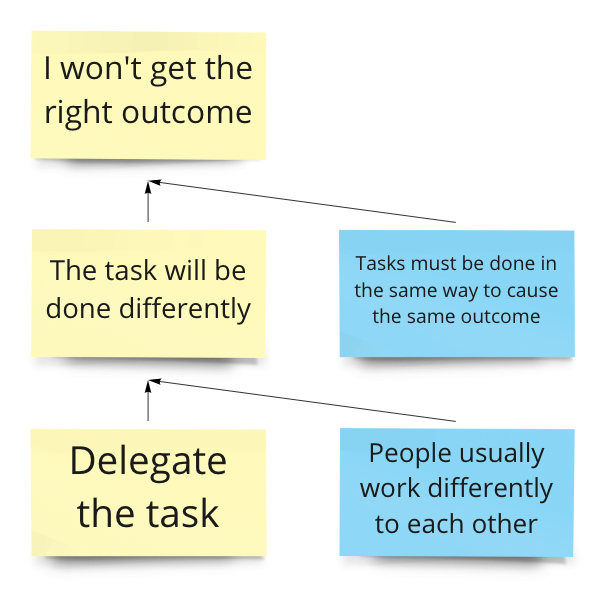
Part 2:
- Challenge those assumptions.
- 1. Are they true?
- 2. Do they have to be true in the future or could we do something to change them? (green)
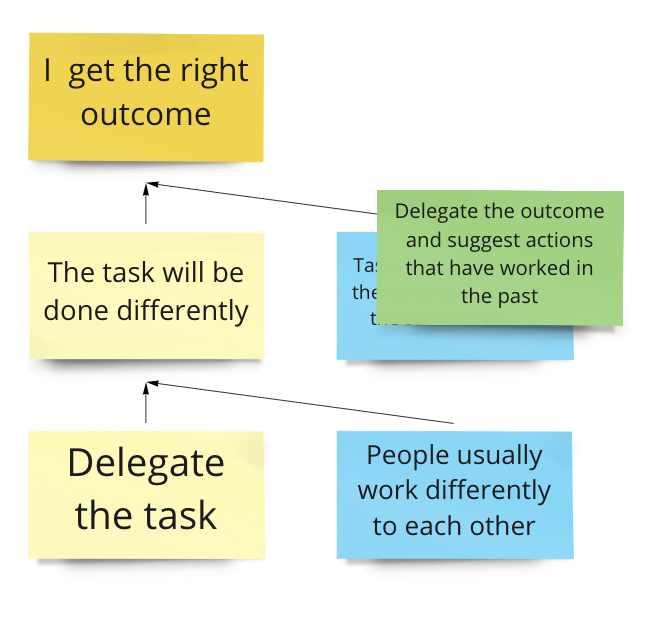
In this case we realise the assumptions are true only because of the way we delegate. If we change the way we delegate to ask people to cause the outcome, and give them suggested actions we know have worked in the past, we are far more likely to get the outcome we wanted.
We’ve taken the time to understand the causality, challenge it, and change it. Try this exercise on one cause and effect situation a day and you’ll very quickly find yourself thinking in cause and effect logic.
You’ll see cause and effect in what others say, and find yourself naturally wondering about the assumptions and how to change them!
